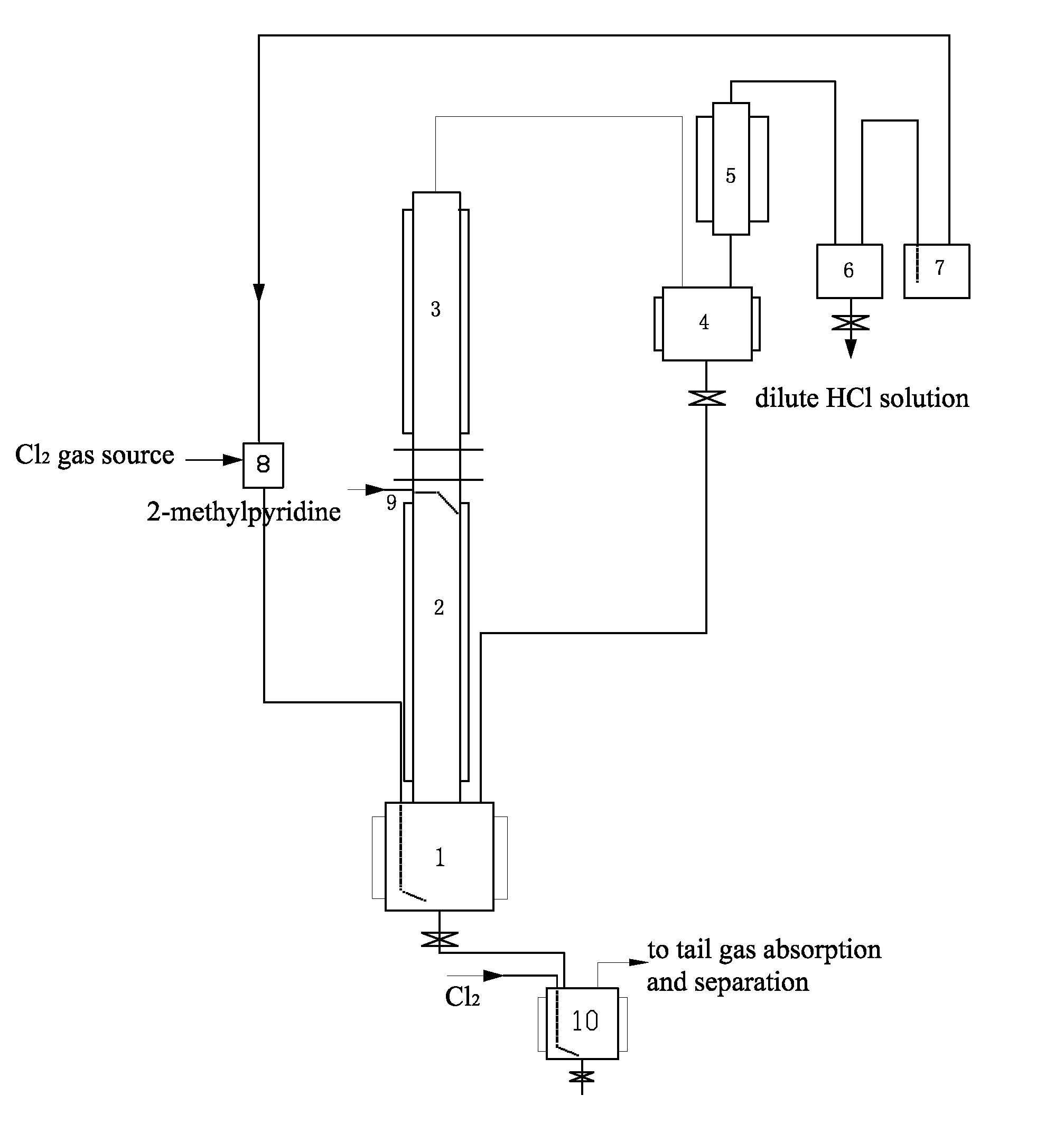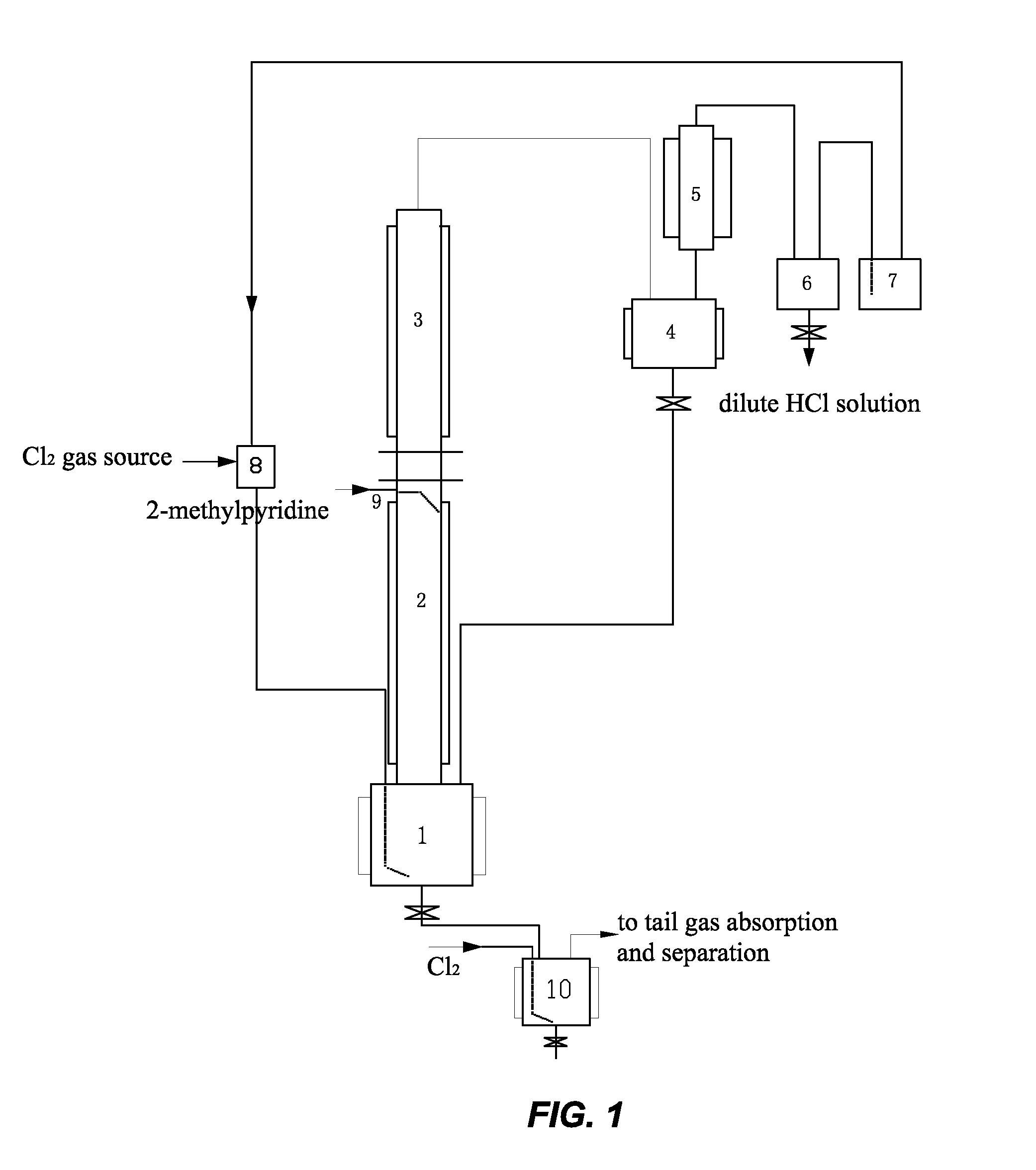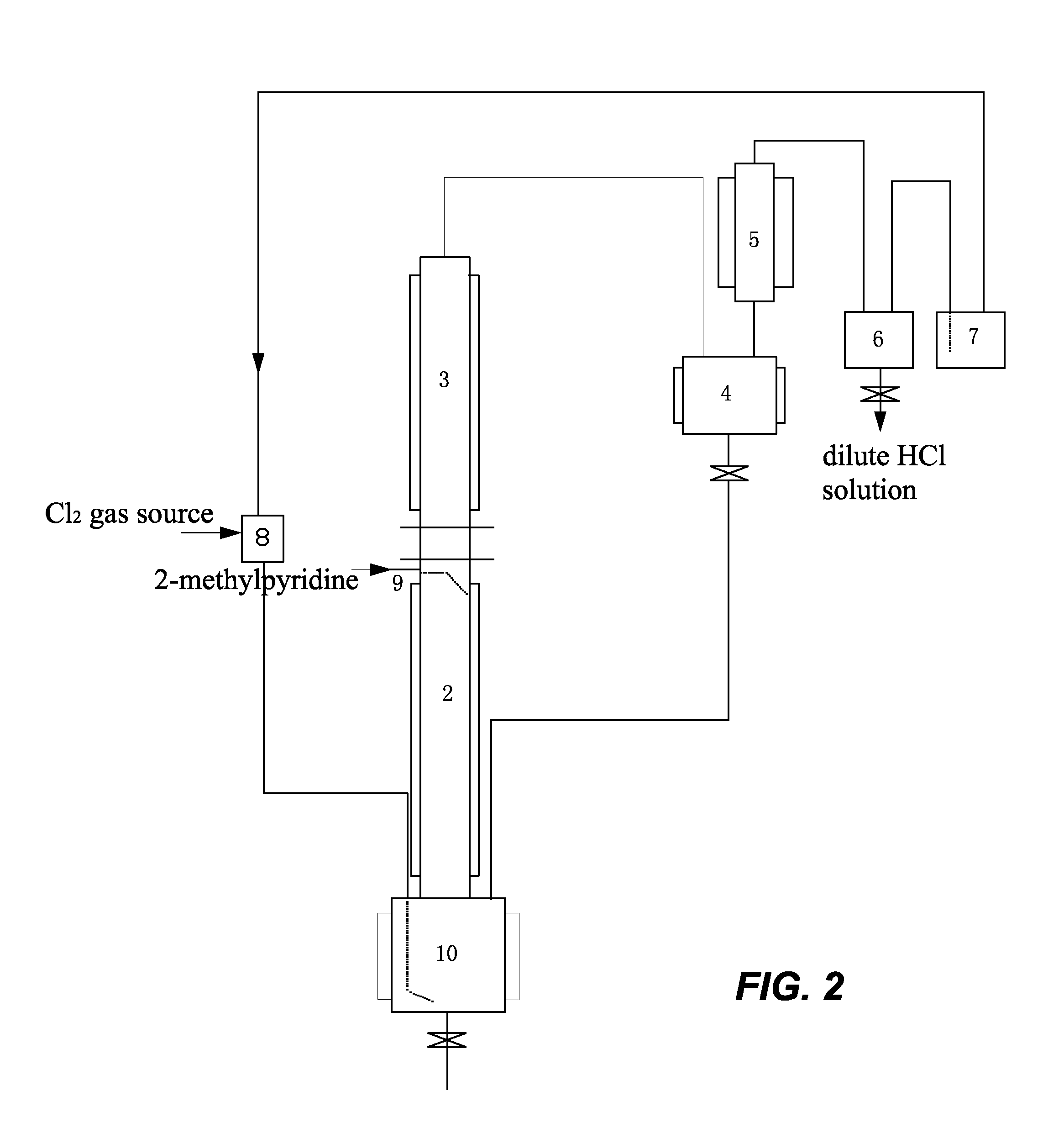6-chloro-2-trichloromethyl pyridine preparation method
a technology of trichloromethyl pyridine and preparation method, which is applied in the field of preparation method of trichloromethyl pyridine, can solve the problems of difficult processing and separation of large amount of tar and polymers, difficult processing of mixture obtained by these methods, and high cost of process, etc., to achieve high yield, facilitate cooling and heating operations, and improve soil and plant nutrition
- Summary
- Abstract
- Description
- Claims
- Application Information
AI Technical Summary
Benefits of technology
Problems solved by technology
Method used
Image
Examples
example 1
[0023]In this example, the method for preparing 6-chloro-2-trichloromethyl pyridine mainly comprises the following steps. Gaseous chlorine and 2-methyl pyridine are used as raw materials, and a continuous reaction is used, as shown in FIG. 1. Firstly, 200 L of liquid 2-methyl pyridine hydrochloride was fed to a first reactor 1 (a 500 L glass-lined reactor) as an initiator. When the temperature rose to 195° C., excess chlorine gas (Cl2) began to be introduced at 25 kg / hr. 2-methyl pyridine was added dropwise at 2.5 kg / hr along a conduit 9 onto the inner wall of a second reactor 2. The gaseous chlorine reacted with the 2-methyl pyridine hydrochloride to form HCl gas. The HCl gas exited from the first reactor 1 and entered the second reactor 2. It contacted and reacted with a counter-current flow of the 2-methyl pyridine on the inner wall of the second reactor 2 to form 2-methyl pyridine hydrochloride and release heat. The second reactor 2 was temperature controlled using tap water as ...
example 2
[0030]The method and basic steps taken in this example are the same as those of Example 1. A continuous reaction is used, as shown in FIG. 1. The weight ratio of Cl2 to 2-methylpyridine introduced was changed into 4:1, chlorine gas was introduced at 10 kg / hr, and 2-methylpyridine was introduced at a rate of 2.5 kg / hr. The reaction temperature was 195° C. The reaction reached a stable state after 36 hours. The materials in the stable state contained 15% 2-trichloromethyl pyridine, 4.3% 3,6-dichloro-2-tri-chloromethyl pyridine, and 80% 6-chloro-2-trichloro-methyl pyridine. The mixture was introduced into the chlorination reactor 10 for further chlorination. Further chlorination was carried out at a reaction temperature of 170° C. under irradiation with ultraviolet light for a total of 8 hours to obtain a mixture containing 92% 6-chloro-2-trichloromethyl pyridine, 6.5% 3,6-di-chloro-2-trichloromethyl pyridine, and the balance impurities of 1.5%. The content of volatile materials was 85...
example 3
[0031]The method and basic steps taken in this example are the same as those of Example 1. A continuous reaction is used, as shown in FIG. 1. The weight ratio of Cl2 to 2-methylpyridine introduced was changed into 2:1, chlorine gas was introduced at a rate of 5 kg / hr, and 2-methylpyridine was introduced at a rate of 2.5 kg / hr. The materials were carbonized into black tarry matter after the reaction had been carried out for 6 hours. The content of volatile materials was 15%.
PUM
| Property | Measurement | Unit |
|---|---|---|
| weight ratio | aaaaa | aaaaa |
| temperature | aaaaa | aaaaa |
| temperature | aaaaa | aaaaa |
Abstract
Description
Claims
Application Information
 Login to View More
Login to View More - R&D
- Intellectual Property
- Life Sciences
- Materials
- Tech Scout
- Unparalleled Data Quality
- Higher Quality Content
- 60% Fewer Hallucinations
Browse by: Latest US Patents, China's latest patents, Technical Efficacy Thesaurus, Application Domain, Technology Topic, Popular Technical Reports.
© 2025 PatSnap. All rights reserved.Legal|Privacy policy|Modern Slavery Act Transparency Statement|Sitemap|About US| Contact US: help@patsnap.com



